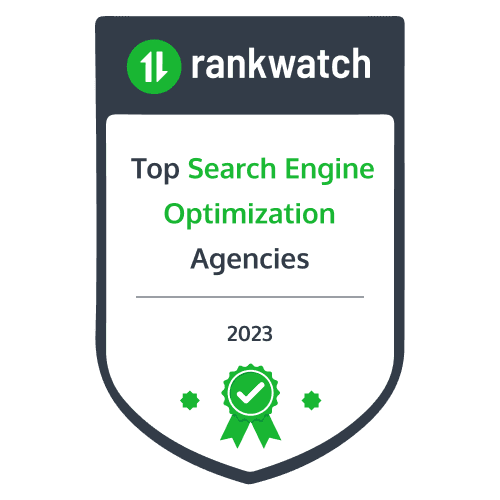
Conversational chatbot is a rapidly evolving technology where customers can get instant answers to their queries, personalized product recommendations, and seamless support without waiting on hold or navigating through lengthy FAQ pages.
In recent years, conversational chatbots have gained considerable attention for their potential to revolutionize customer engagement and retention. As a business owner or marketer, it’s crucial to understand the power of these AI-driven virtual assistants and how they can help you stay ahead of the competition in the ever-evolving digital landscape.
In this comprehensive guide, we’ll explore the role of chatbots in customer success, the advantages of using conversational chatbots for engagement and retention, the key features of an effective chatbot, and much more. So, buckle up and get ready to take your customer success strategy to new heights with the help of conversational chatbots!
The Role of Chatbots in customer success


Customer success is all about providing an exceptional experience to your customers throughout their journey with your brand. It includes solving their problems, anticipating their needs, understanding their preferences, and building solid relationships. Conversational chatbots play a pivotal role by serving as your customers’ first point of contact, handling a wide range of tasks, and providing real-time assistance.
One of the primary ways chatbots contribute to customer success is by offering instant support. Customers expect quick and accurate responses to their queries in today’s fast-paced world. Conversational chatbots can deliver this by leveraging natural language processing (NLP) and machine learning (ML) technologies to understand customer inquiries and provide relevant solutions.
In addition to offering support, chatbots can also help businesses drive customer engagement by providing personalized experiences. Chatbots can offer tailored product recommendations, promotions, and content that align with individual preferences and needs by analyzing customer data and learning from past interactions.
Furthermore, chatbots can streamline customer onboarding by guiding new users through setup, answering common questions, and collecting valuable feedback. This helps reduce friction, improves adoption rates, and fosters long-term customer loyalty.
Advantages of using conversational chatbots for engagement and retention
There are numerous benefits to incorporating conversational chatbots into your customer success strategy. Some of the most notable advantages include:
- 24/7 availability: Conversational chatbots can provide round-the-clock support, ensuring that your customers always have access to assistance, regardless of the time or day.
- Cost-effectiveness: By automating routine tasks and handling many customer inquiries, chatbots can help businesses save on staffing costs and resources.
- Improved response times: Chatbots can respond to customer queries in real-time, reducing wait times and enhancing overall satisfaction.
- Personalization: Conversational chatbots can deliver tailored experiences based on individual customer data, preferences, and past interactions, fostering deeper connections and increasing engagement.
- Scalability: As your business grows, chatbots can effortlessly handle increased customer interactions without the need for additional resources or personnel.
- Data-driven insights: Chatbots can collect valuable data on customer behavior, preferences, and pain points, enabling businesses to make informed decisions and improve their products or services.
- Multilingual support: Conversational chatbots can be programmed to support multiple languages, ensuring customers from diverse linguistic backgrounds can access assistance in their preferred language.
Key features of an effective conversational chatbot
To maximize the benefits of a conversational chatbot, focus on the following key features:
- Natural language understanding (NLU): NLU enables chatbots to comprehend user inputs, regardless of syntax or colloquialisms, ensuring accurate and effective responses.
- Contextual awareness: Chatbots must understand the context of a conversation and respond accordingly, maintaining a natural and coherent flow.
- Personalization: The chatbot should be able to leverage customer data and past interactions to deliver personalized experiences and recommendations.
- Integration with existing systems: An effective chatbot should seamlessly integrate with your existing CRM, marketing, and customer support platforms to ensure a unified and efficient customer experience.
- Easy setup and customization: The chatbot platform should allow for straightforward setup and customization, enabling businesses to tailor the chatbot to their specific needs and branding.
- Continuous learning: Chatbots should be able to learn from customer interactions and evolve, improving their understanding and response capabilities.
- Analytics and reporting: The chatbot platform should provide robust analytics and reporting features, allowing businesses to track performance, identify trends, and make data-driven improvements.
Integrating Chatbots into your customer success strategy


Integrating a conversational chatbot into your customer success strategy requires careful planning and consideration. Here are some steps to help ensure a successful implementation:
- Define your goals: Start by outlining the objectives you hope to achieve with your chatbot, such as improving response times, increasing customer satisfaction, or driving personalized engagement.
- Identify key use cases: Determine the specific tasks and interactions your chatbot will handle, such as answering frequently asked questions, providing product recommendations, or assisting with onboarding.
- Choose a chatbot platform: Research and select one that aligns with your goals, offers the necessary features, and integrates seamlessly with your existing systems.
- Design and develop your chatbot: Work with your team or a development partner to create a chatbot that reflects your brand, addresses your critical use cases, and offers an engaging user experience.
- Test and optimize: Thoroughly test your chatbot to identify any issues or areas for improvement and make the necessary adjustments to ensure optimal performance.
- Launch and promote: Introduce your chatbot to your customers through targeted marketing campaigns, social media, and in-product messaging.
- Monitor and iterate: Monitor your chatbot’s performance, collect user feedback, and make data-driven improvements to enhance its effectiveness over time.
Industry examples: Successful chatbot implementation
Numerous businesses across various industries have successfully implemented conversational chatbots to enhance customer success initiatives. Here are a few inspiring examples:
- Sephora: The beauty retailer’s chatbot, Sephora Assistant, helps customers book in-store appointments, receive personalized product recommendations, and access beauty tutorials, increasing customer engagement and satisfaction.
- Bank of America: Erica, Bank of America’s virtual financial assistant, provides personalized financial guidance, answers banking questions, and assists with transactions, significantly enhancing the bank’s customer support capabilities.
- Domino’s: The pizza chain’s chatbot, Dom, allows customers to place orders, track deliveries, and access promotions, streamlining the ordering process and boosting customer loyalty.
Measuring the impact of conversational chatbots on customer engagement and retention


To assess the effectiveness of your conversational chatbot, track relevant metrics and KPIs that reflect your customer engagement and retention goals which can include:
- Response time: Measure the average time it takes for your chatbot to respond to customer inquiries, aiming for rapid response times that minimize wait periods.
- Conversation completion rate: Track the percentage of conversations your chatbot successfully resolves without human intervention, indicating the chatbot’s effectiveness in addressing customer issues.
- Customer satisfaction: Collect customer feedback and ratings to gauge the quality of your chatbot’s support and user experience.
- Engagement rate: Monitor the number of chatbot interactions and the duration and depth of those interactions to assess customer engagement levels.
- Retention rate: Analyze customer retention rates and compare them to pre-chatbot benchmarks to determine the impact of your chatbot on customer loyalty and long-term engagement.
By tracking these metrics, you can gain valuable insights into your chatbot’s performance and identify areas for improvement. Use this data to fine-tune your chatbot strategy and optimize its effectiveness over time.
The future of conversational chatbots: Emerging trends and technologies
As conversational chatbots evolve, we expect to see a range of emerging trends and technologies that will further enhance their capabilities and impact customer success. Here are a few key trends to keep an eye on:
- Voice-enabled chatbots: With the growing popularity of voice assistants like Amazon’s Alexa and Google Home, we expect to see more chatbots integrate voice-enabled capabilities to provide hands-free assistance.
- Multimodal chatbots: Multimodal chatbots leverage a combination of voice, text, and visual interfaces to provide a more immersive and engaging user experience.
- Emotional intelligence: As chatbots become more advanced, we can expect them to develop dynamic intelligence capabilities that enable them to recognize and respond to customers’ emotions, further enhancing the personalization and connection of the customer experience.
- AI-powered chatbots: With the rise of artificial intelligence technologies such as natural language processing and machine learning, chatbots will become increasingly intelligent and capable of handling more complex tasks and interactions.
- Chatbot ecosystems: As chatbots become more ubiquitous, we can expect to see the emergence of chatbot ecosystems that allow businesses to connect and collaborate with other chatbots and platforms to enhance the customer experience further.
Selecting the right conversational chatbot for your business


Choosing the right conversational chatbot for your business requires careful consideration and planning. Here are some key factors to keep in mind:
- Business goals: Start by defining your business goals and the specific customer success initiatives you hope to achieve through a chatbot.
- Target audience: Consider your target audience’s preferences, needs, and communication styles to ensure your chatbot meets their expectations.
- Chatbot features: Evaluate different chatbot platforms and their features to determine which best aligns with your business goals and customer success objectives.
- Customization and branding: Look for chatbot platforms that offer effortless customization and branding options, allowing you to tailor your chatbot to your brand’s unique voice and identity.
- Integration with existing systems: Ensure your chatbot integrates seamlessly with your existing CRM, marketing, and customer support systems to provide a unified and efficient customer experience.
- Cost and scalability: Consider the costs and scalability of different chatbot platforms and select one that aligns with your budget and growth plans.
Conclusion and key takeaways
Conversational chatbots are rapidly transforming the world of customer success, offering businesses a powerful tool for enhancing engagement, retention, and loyalty. By leveraging natural language processing, machine learning, and AI technologies, chatbots can provide personalized, 24/7 support to customers, streamline onboarding processes, and collect valuable data insights.
Contact Markitome to gain further insight into customer retention.



We hope you’re enjoying reading our blogs… Don’t forget to secure your browsing experience with Nord VPN. Click the banner below to learn more
More To Explore
Redefining Digital Marketing in 2024: 10 Game-Changing Trends
In the ever-evolving world of digital marketing, staying ahead of the curve is essential. As we approach 2024, it’s crucial to be aware of the
SEO Mania-7 Proven Strategies for Explosive SEO Growth in 2024
Understanding the Importance of SEO in 2024 In the ever-evolving world of SEO, staying ahead of the curve is crucial to your online success. As